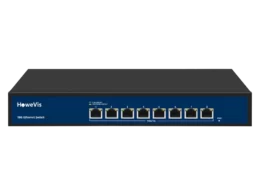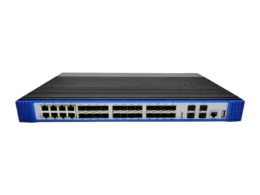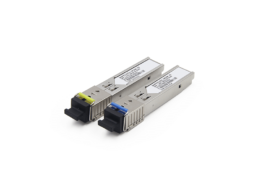Using 10G Ethernet has gotten off the ground due to lower latency, higher data speed, and network virtualization.
My friend asked If I could use my 10G Switches with the Gigabit Ethernet.
And it was unexpected. I had never thought about it before, leaving me to explore and research.
So, is 10G Ethernet backward compatible?
YES. It is. But does it work with multi-gig also?
Let’s find out.
Suggested Reading: Are there 10GB switches?
What is 10G Ethernet?
10G Ethernet is a groundbreaking technology that provides a 10 Gbps data speed and lower network latency. Imagine 10 GBPS, a whopping data speed.
More extensive networks, enterprises, and industries consider the 10G Ethernet its trump card.
Many reasons.
Lower bottlenecks, high network speed, fast website servers, and no hacking (we will study all of these later in this guide).
What is Multi-Gig Ethernet?
Multi-Gigabit Ethernet is a new, tall-in-the-saddle technology that has compelled the Institute of Electrical and Electronics Engineering to find new, above-par methods.
Usually, 2.5G is a Gigabit Ethernet. Imagine for a minute, and the answer is, is 2.5G only multi-gigabit Ethernet?
NO. We have multiple other options for this category.
Any technology supporting data speed between 10G and 1G is multi-Gigabit Ethernet. It can be:
- 2.5GbE
- 5GbE
- 7.5GbE
All of these support different data speeds and provide an easy-peasy option.
Let’s explore more about both technologies.
10G Ethernet Vs. Multi-Gigabit Ethernet
10G Ethernet and Multi-Gig Ethernets are different options available to the users, yet they are different.
Let’s find out 10G Ethernet Vs. Multi-Gig Ethernet.
Data Speed
Data speed is a revolutionary solution for every data problem.
Whether at home or in the office, one thing is permanent. And that is the use of DATA! But the question is— Do we have enough data speed that provides us with more technical features?
Yes. We have Wi-Fi networks and sometimes Ethernet networks that have more prominence.
Regarding Data speed, we can differentiate our 10G Ethernet from the multi-gigabit Ethernet.
10G Ethernet provides a maximum data speed of 10 Gbps. The transfer speed is 1.25 Gbps when transferring files from one device to another. However, you can vary the data speed and consider it your top speed.
Multi-gigabit is also a fast data technology providing three different options to enterprises’ internet service providers and data managers.
- 7.5G provides 7.5 Gbps
- 5G provides 5 Gbps
- 2.5G provides 2.5Gbps
You can change your data speed with its lower versions. The great thing about multi-gigabit Ethernet is its multiple versions with different speed supports. Moreover, it is a solution to the slow Wi-Fi connection at home.
Bandwidth
Bandwidth definition:
“Amount of information sent from one computer to the other over the Internet.”
Focus on the AMOUNT OF INFORMATION. Not the speed of information. So, never confuse it with data speed. That is quite another aspect.
A higher bandwidth would have higher network support and provide excellent support to the network.
If we consider bandwidth a parameter for differentiation, here we are.
10G Ethernet has a higher data speed and sends a high volume of information. Its bandwidth is 10 billion bits per second. It is much higher than the group of Ethernet options in the multi-gigabit Ethernet.
We have three versions of bandwidth for multi-gigabit Ethernet.
- 7.5G Ethernet has a bandwidth of 7.5 billion bits per second.
- 5G Ethernet has a bandwidth of 5 billion bits per second.
- 2.5G Ethernet has a bandwidth of 2.5 billion bits per second.
Check the difference between the 10G Ethernet bandwidth and other Gigabit Ethernets. Don’t you think 10G has a higher bandwidth? Hence, higher network support.
How do Both technologies work?
The working mechanism of technology relies on various factors. In Ethernet technology, we consider the IEEE-defined rules to be the standards for the technology.
When you compare PoE technology with Ethernet, you can observe one thing: There are clearly different standards. These stimulate various features, such as speed.
When discussing the Gigabit Ethernet technology, we still have the different IEEE standards for each version and type.
10 Gigabit Ethernet works on the standard of IEEE 802.3ae. IEEE introduced this standard 2002 and provided the ultimate flexibility to the 10 Gigabit Ethernet with different mechanisms and working setups.
To get the 10GbE, you must have the proper network installations with access to 10GbE switches and devices. If everything is working and compatible, you can receive the maximum data speed of 10GbE.
We have three technologies for multiple gigabit Ethernet. The standard is 802.3bz. The same happens when you try to get a data connection from this technology.
You have to employ Ethernet switches and devices. With real connections among the devices, you get the list of data speeds and vary it accordingly.
Network Latency
Can you define the network latency? The higher the network latency, the lower the performance will be.
Can you even understand the network latency by focusing on the above sentence? Let me help you define it.
Network latency is the network delay that processes the data packets and transports them from one device to another.
More delay means lower speed and performance. Thus, I mentioned the above factors to effectively illustrate the situation.
Do you know why delays occur in the network? These might be due to BOTTLENECKS and HIGHER TRAFFIC that hinder the data packets’ processing and transport.
Network latency can rely on factors like:
- Data Speed
- Bandwidth
Now, the question is— Which technology is more latent?
10G Ethernet has a higher data speed and higher bandwidth. There will be fewer bottlenecks. So, the network latency would be less than expected compared to the 10GbE.
Multiple Gigabit Technology also has a lower network latency, but it is higher than the 10GbEs. Therefore, network latency can be an option for comparing the technologies.
Ethernet cables
Before defining the Ethernet cables, we have to understand the role of Ethernet cables in the network.
An Ethernet cable has connectors(RJ45 mostly) at both ends. These connectors help the switch connect with the Ethernet devices and give a node to the data connection for these devices.
Without Ethernet cables, your data connection is insufficient. When you can’t connect your devices, how can you expect a wireless access point-like connection from the Ethernet? Remember. Ethernet is only possible if the cabling system is effectively defined and implemented.
However, Ethernet cables have different types. These can:
- Cat 1
- Cat 2
- Cat 3
- Cat 4
- Cat 5
- Cat 6
- Cat 7
- Cat 8
Cat 5 and Cat 6 have subversions derived from them.
10 Gigabit Ethernet and 2.5 Gigabit Ethernet have different Ethernet cable compatibility. Therefore, it can be an excellent option to make them competitors.
10GbE has a maximum speed of 10 Gbps. It is supported by Cat 5e. If you try to use Cat5 or lower versions, you might not get the data speed. Moreover, you can get 10 Gbps in 30-45 meters. If you want a maximum range of 100 meters, you must employ Cat6 or higher Ethernet cables.
If you want 2.5 Gigabit Ethernet or other multiple Gigabit Technologies, you need at least Cat5e. Unlike 10GbE, which has a maximum range of 100 meters even if you use Cat5e, you can consider Cat5e more than sufficient for the given reasons.
Cost
Who wants to invest money again and again? If someone does, it will be a crazy decision. Therefore, act purposely and wisely to get optimal results. You should save some bucks on your next trade with Gigabit Ethernet.
Look. Not everyone is rich enough to get 10GbE. Some rely on 2.5GbE to get the networking.
So, is 10G so expensive?
Let’s find it out.
10GbE is an expensive technology. The deployment cost is higher.
2.5GbE or other multiple gigabit technologies are less expensive than 10GbE, so you can choose any option depending on your situation.
Flexibility
Flexibility is a buzzword, and no single term defines it.
The flexibility of an Ethernet network refers to various crucial features. Backward compatibility and speed variation are other options to choose from.
We can consider flexibility as a parameter and the 10GbE and 2.5 Gigabit Ethernet.
10GbE has little backward compatibility. It is a good choice if you contemplate overusing it for Fast Ethernet and 1GbE. However, it doesn’t support multiple Gigabit Ethernet speeds.
2.5GbE or higher technologies can be necessary in that case. They are backward compatible and provide access to variable speeds. You can fix the configuration according to your preferences. Therefore, they become even more crucial for the given scenarios.
Can you use the 10G Ethernet switches with the Multi-Gigabit Switches?
10G Ethernet is sock-knocking technology. Does it have any flaws?
10 Gigabit Ethernet is also backward compatible. But does it work with multi-gigabit Ethernet? This debate will continue for a longer period.
However, the fact is:
- 10G Ethernet supports the 1GbE and 100 Mbps data speed.
- 10G Ethernet does not support Multi-gig Ethernet.
You might wonder like I am, ” When 10 Gigabit Ethernet supports 1GbE, why not multi-Gig? WHY?”
Multi-gig Ethernet was introduced later in 2016, while 10G Ethernet was present earlier. Before, there was no concept of intermediate technologies of 2.5, 5, and 7.5 Gigabit Ethernet.
Therefore, 10GbE supports 1GbE and even Fast Ethernet.
But no support for the Multi-gigabit Ethernet.
Therefore, you can determine the number of applications you need and choose the better option depending on your needs.
5 Applications of 10 Gigabit Ethernet
10GbE offers multiple options for users to have a high-speed network with higher performance and lower latency.
Industrial Ethernet Networks
In industrial areas, multiple machines process simultaneously. Time synchronization is critical; otherwise, the whole manufacturing process won’t work and can be dangerous for the networks.
But how will you do the time synchronization at such a place? It is where we consider the 10GbE. It does nothing except the kickass performance of the network and out-of-the-box approach to REAL-TIME tracking.
If five machines are involved in production, one will work after the other. It is only possible if the signals are going accurately and timely.
Ethernet provides a fast data connection for that case. Higher speed. Lower latency. And fast processing of signals.
You will operate your devices without any problem. Moreover, you have surveillance cameras to monitor the errors. In that case, you can get real-time videos and determine whether processes and devices are working perfectly or not.
Public Area Networks
In outdoor places, you can observe the public area networks. Public areas provide internet to people. More people. More burden. And more traffic.
Traffic increases the network bottlenecks. You will face serious networking problems. For example, if you have 100 devices connected to your Ethernet network, there will be more traffic than 10 devices at home or the office.
Since the traffic is higher and the burden increases, you must employ copper-bottomed technology.
10GbE is a technology that can work in such places. Higher bandwidth and lower latencies improve traffic coping situations and provide a high-speed data connection to the devices.
Enterprises Networks
Enterprises have bigger networks. Multiple devices are connected simultaneously to drive the data connection.
However, at every enterprise network, you might need the 10GbE. Moreover, the network also requires flexibility. 10GbE provides all these features.
Therefore, such networks might have 10GbE as their foremost priority.
Data Management Networks
Data Management networks are continually concerned with data monitoring and storage. A single failure can cause several problems, such as time synchronization.
All these functionalities are performed with the help of data connection. And what manages this data?
Ethernet technology provides all the solutions. So, 10GbE can also be part of data management networks.
Surveillance Systems
Suppose you deploy hundreds of cameras in the industrial sectors or university hostels to monitor the students. There are even high-security requirements in jails.
The surveillance system also requires a data connection to transfer the recorded files or live streams on the camera.
10GbE can be sufficient for them.
3 Advantages of 10GbE
10GbE provides the network with multiple facilities. You can learn all the advantages.
Can you guess the reasons for checking out the pros of technology?
You can decide on technology when you know what benefits it will have.
No Hacking Risks
Hacking is a crime—we all know that—but the number of cases has increased. Do you know why?
It is because people don’t tell, or sometimes it is hard to catch the hackers. Therefore, cyber crimes have increased.
Regarding Ethernet technology, we have all the facilities at once. Different security protocols can filter the data packets and implement on-track security systems. Hackers can not penetrate the network and hack the system. Therefore, Gigabit Ethernet has been a successful technology due to its many uses.
Network Virtualization Is Possible
Network virtualization is a fascinating feature. But it is possible only if:
- There are fewer bottlenecks in the network.
- The network speed is very high, which makes network virtualization possible.
- The network performance is higher.
In the case of 10GbE, you have all the features. So, there is no problem. Moreover, the network’s security is higher, leaving the hackers in the dump. So, you can consider it a reliable source for network virtualization.
The significant facts about 10GbE are its lower latency and higher bandwidth. So, you don’t need to worry about whether it will support your virtual network.
Higher Network Performances
Network performance is a symbol of reliability. As far as we can tell, 10GbE has a higher performance than 2.5GbE or lower technologies.
That means it can support higher network performance and multiple devices connected over the network. In that case, the system is not to be worried about. Higher performances are possible with a higher bandwidth of 10GbE.
At high bandwidth, it can support 10 Gbps and network virtualizations. Moreover, Network upgrades have become more accessible. So, it is the technology you must implement in your systems.
Final Words
Do you have a 2.5GbE or wireless access point at home? At home, there is no need for a higher data connection. You need a speed to download a 4K video or live stream. 2.5GbE is far enough for this situation and offers a better option. However, 10GbE or higher technologies can be an essential choice in industrial areas.
Do you want to purchase Ethernet technology tools? HoweVision Professional is a Chinese supplier with access to foreign countries. Wherever you live, please message us and let us know your project. We will estimate the price and let you know the total cost.










